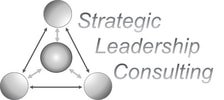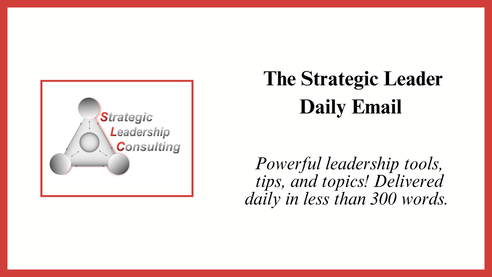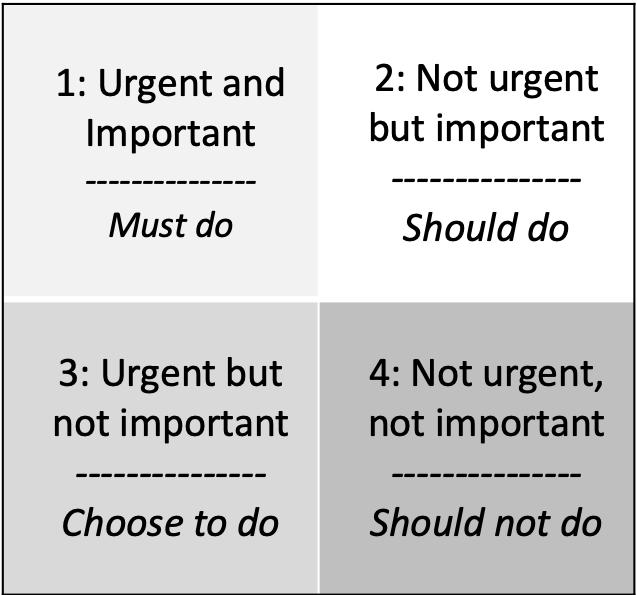|
Colleagues,
The first key to getting off the treadmill is to act with intention on a daily basis. This happens in three parts:
Do good and be well, Frederick
0 Comments
Colleagues,
There are three practices we can implement to proactively decrease the number of urgent issues we face. These practices are not hierarchically arranged. In your effort to get off the treadmill, think about which practice will yield the most immediate results with the least effort (leverage) and begin there. Develop standard operating procedures (SOPs). A SOP is a detailed instruction sheet for performing a specific task. SOPs bring structure, support, transparency, and consistency to operations. Benefits:
Leverage your team:
Do good and be well, Frederick Colleagues,
Yesterday I asked you to keep track of what you did during the day and how much time it took. Now let’s review your data. For each activity, ask yourself these questions:
After reflecting, identify where in the Eisenhower Matrix each activity falls. Important v. not important: The issue or task is relevant to the core purpose of the organization or is critical to operations or a specific initiative or effort that aligns to the core purpose. Urgent v. not urgent: Urgent issues or tasks will not be able to be completed at a later time. Ether the thing will expire, or it will trigger an event that will then require a different kind of response. Now reflect again:
Tomorrow we’ll look at 5 ways to respond strategically to urgent issues! Do good and be well, Frederick Colleagues,
There are four keys to getting off the treadmill and, not surprisingly, they correspond to the four traits of strategic leadership:
We will spend the rest of this week on acting with intention, which has three components:
Where does your time go? There are two parts to tracking time: listing tasks, and measuring time spent on those tasks. Choose the method that aligns most naturally with how you work:
About 70% of the people that read this email do so before 10:00 in the morning, so here is my challenge for you:
Tomorrow we’ll analyze what happened and then dive into being strategically reactive. Do good and be well, Frederick |
Categories
All
Archives
July 2024
|



 RSS Feed
RSS Feed